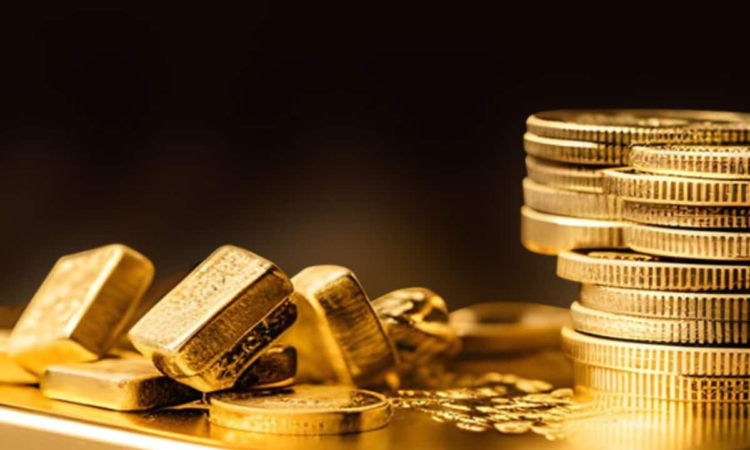
Story continues below Advertisement
Since the First World War, dollar’s importance in the world has been continuously increasing. When America’s allies started giving gold in exchange for their imports, the United States officially became the world’s largest gold reserve. After the war, many countries linked their currencies to the dollar and with this the gold standard ended and the dollar became the most preferred currency in the world. All nations started maintaining foreign exchange reserves in the form of dollars, and thus by 1999, the share of the dollar in the total foreign exchange reserves of the world increased to 71 percent. At the same time, many European nations decided to adopt a common currency called ‘Euro’.
Due to this, the share of the dollar and global reserve currency started decreasing. According to the International Monetary Fund (IMF), the dollar’s share as global reserve was 62 percent in 2010 and 59 percent in 2020 and 58.41 percent in 2023. Though the importance of the dollar is decreasing, it continues to remain the world’s most preferred currency. It’s notable that, ‘Euro’ comes at a distant second place, and it constitutes barely about 20 percent. In terms of Indian rupee, where one dollar was equal to 4.66 rupees in 1964, it has now become much stronger compared to other currencies, to reach 83.4 rupees per dollar.
Story continues below Advertisement
Signs of De-dollarisation
But for some time now, there have been signs of de-dollarisation in the world. Due to the continuous strengthening of the dollar, almost all the countries, especially the developing ones, have suffered hugely. The Government of India and the Reserve Bank of India have been constantly trying to increase the role of the rupee in international payments. In this regard, agreements and arrangements have been made with about 20 countries. On the other hand, due to the difficulty in international transactions, triggered by turmoil and especially the sanctions imposed by the US and European countries on Russia, efforts to make payments in local currencies have also increased in other countries.
The world’s aversion towards the dollar has further accentuated because US has confiscated all of Russia’s dollar reserves, calling Russia, an aggressor. Other countries realised they may face payment problems like Russia. And so, they are making two-pronged efforts. One, payment in local currencies and second, increase in gold reserves in place of dollars.
Story continues below Advertisement
Rise in India’s Foreign Exchange Reserves
If we talk about India, we see that the foreign exchange reserves increased to 648.6 billion dollars by the first week of April. While, the gold reserves in India’s foreign exchange reserves reached 55.8 billion dollars, as a result of huge buying of gold to the tune of 1.24 billion dollars in a single week. India’s gold reserves are 13 tons more than last year. India ranks 9th in the world in terms of official gold reserves. The RBI has also officially confirmed its priority of gold reserves.
According to World Gold Council data, while 450.1 tonnes of gold was purchased by central banks and other institutions of various countries in the year 2021, it increased to 1135.7 tonnes in 2022. In the year 2023, they purchased 1037 tonnes of gold. Meanwhile, the unprecedented increase in the purchase of gold by central banks in the past years has increased the demand for gold in the world.
Story continues below Advertisement
The price of gold in the last two-three years has seen an unprecedented increase. In the year 2018, the average price of gold was $1268.93 per ounce, which has reached $2126.82 per ounce so far in the year 2024. That means an increase of 67.6 percent in the price of gold in just less than 6 years, i.e. an increase of approximately 9.7 percent annually.
Why Is Preference For Gold Increasing?
In the last few years, the demand for gold has steadily increased which has also caused a price rise. In 1988, the price of gold was $437 per ounce, which increased to $1268.93 per ounce by 2018, i.e. an annual increase of 3.61 percent in 30 years. But in the last 6 years, the price of gold has been increasing at the rate of 9.7 percent. Economic analysts of the world are pointing towards important changes in the global monetary and financial conditions.
The first reason is that the US Federal Reserve has been expressing the possibility of reduction in the interest rate, also known as Fed Rate. In such a situation, when the interest rates are low, people will be attracted towards buying gold instead of holding financial assets. So we can say that if the interest rate falls, the demand for gold will increase.
The second reason is that central banks around the world, including China, are now buying more and more gold. There is no signs of this trend receding.
Thirdly, gold prices are expected to increase around the world. In such a situation, the chances of central banks buying more gold further increases, because if central banks increase the amount of gold in their foreign exchange reserves, then value of their foreign exchange reserves will automatically increase with the rising gold prices.
This increasing demand for gold raises many pertinent questions, the most important of which is whether the dominance of the dollar is ending now. And if the importance of gold is going to increase in international transactions.
Only time will tell the answer to these questions, but it is clear that the world is definitely moving towards de-dollarisation, as emerging economies are trying to settle their foreign trade in their domestic currencies.
Discover the latest business news, Sensex, and Nifty updates. Obtain Personal Finance insights, tax queries, and expert opinions on Moneycontrol or download the Moneycontrol App to stay updated!
